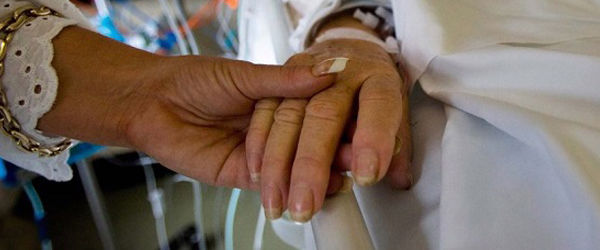A dozen years ago at the Catholic shrine in Chimayó, New Mexico, Father Paul Hruby bought a piece of devotional folk art depicting the Mother of Sorrows, painted in the santeros (saint makers) tradition dating back more than 300 years.“I was picturing this little old man” who painted it, said Father Hruby, pastor of St. Julie Billiart Church in Newbury Park. He was surprised to learn on a visit to Santa Fe a decade later, a year after being named St. Julie’s pastor, that his retablo (saint painting) had been painted at age 20 by Nicolas Otero, who, at 16, started painting in the santeros tradition using pigments obtained from nature. Impressed with Otero’s dedication and craftsmanship, Father Hruby invited him to consider making new Stations of the Cross for the parish.St. Julie Billiart — situated near the El Camino Real, just south of the 101 Freeway — was about to embark on a renovation project that would include new interior plaster, wall stenciling and wrought iron fixtures reminiscent of early California. The design sketches Otero submitted reflected the desired southwestern look, and he was commissioned to paint the 14 Stations.After taking a year’s absence from his elementary school art teacher’s job to pursue the project, Otero, his wife and two-year-old son recently brought the completed Stations of the Cross from their home near Santa Fe to St. Julie’s. They arrived in Newbury Park on May 22, his 32nd birthday.Otero, whose work also adorns churches in New York, Colorado and Arizona, told The Tidings that it’s a blessing to share the santeros tradition of religious art, rooted in New Mexico’s colonial days of the 1700s. “The paintings were simple, but to-the-point and done with much emotion,” said Otero, who was inspired to apprentice with a santero as a high school junior after seeing a class presentation on New Mexico’s indigenous devotional folk art. “It’s a lot of work to continue the tradition, but very rewarding; there’s something noble about it,” said Otero, who primes the bass wood with gesso and applies the many layers of natural pigment paint, including colors derived from yellow and green clays as well as plant-based colors such as vermillion and indigo. After the Stations were installed at St. Julie’s, Otero applied final touches of gold leaf to the Stations’ florets before the official unveiling at Memorial Day weekend Sunday Masses. “Parishioners were entranced,” said Father Hruby, noting that many people told him that the Stations reminded them of the California missions. “I think they’re inspiring and beautiful — the kind of Stations that people will find as a great help to prayer,” said the pastor. “I’ve never been so well received” as at St. Julie’s, commented Otero. “The parishioners’ pride and sense of faith is very refreshing to me.” His visit to the Santa Barbara Mission during his Newbury Park stay was another highlight of his trip.“I saw similarity with [paint] pigments and how altars are set up. It’s a blending of cultures that I enjoy,” said Otero, who goes back to full-time teaching in August. He will continue to paint in his free time and is currently preparing artwork to sell at the Traditional Spanish Market in late July on the Santa Fe Plaza, where Father Hruby discovered two years ago that Otero was the young santero behind the retablo purchased in Chimayó.“This is devotional art to meditate on; it’s not about the individual [artist],” said Otero. “It’s the greatest honor of my life to share this.”For more information on the art of Nicholas Otero, visit www.nickoterostudios.com. {gallery width=100 height=100}gallery/2013/0614/sbjulie/{/gallery}

